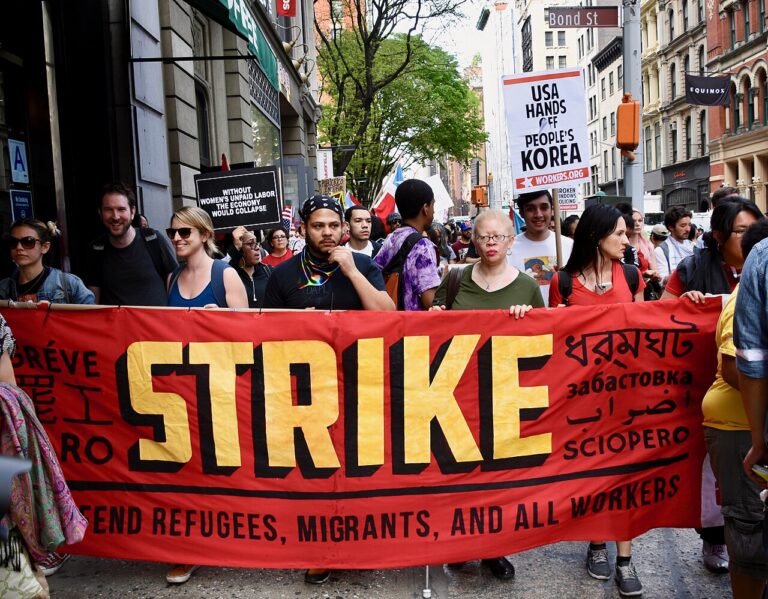Hannah Finnie is a writer in Washington, D.C. interested in the intersections of work and culture. She is a graduate of Harvard Law School.
AFL-CIO president and key labor leader Richard Trumka passed away yesterday. Originally a mine worker, Trumka rose through the ranks of the United Mine Workers and eventually became the president of the AFL-CIO, becoming an often-looked-to voice on labor issues.
A new report from The Century Foundation estimates that 7.5 million workers in the U.S. will lose all unemployment benefits once federal pandemic unemployment assistance ends on September 6. The authors of the study reached its estimates by examining the current caseload of each pandemic-related unemployment assistance program and the rate at which people are exiting programs (the current 9.3 million Americans on one of the two pandemic unemployment assistance programs is a decline from February’s 13.8 million Americans using the programs, and numbers are expected to continue to decline through summer). More specifically, the report’s authors project that 4.2 million workers on the PUA (Pandemic Unemployment Assistance) program and 3.3 million workers under the PEUC (Pandemic Emergency Unemployment Compensation) program will lose benefits. The unemployed workers on PUA, which by definition only includes workers who are not eligible for any other state or federal unemployment benefits, will face a complete lack of assistance once PUA ends. Meanwhile, some of the 3.3 million unemployed workers on the PEUC program may be eligible for some state-based unemployment assistance once PEUC ends. The report also notes that ending these programs too early into the economic recovery will hurt black workers – whose unemployment rate remains at a staggering 9.2 percent – and caregivers the most.
The NewsGuild, which represents journalists and other non-media workers, like the ACLU of Missouri, reported that it broke all its past organizing records in 2021, five months before the year has even ended. NewsGuild has organized a record-setting 1,500 workers across 29 different organizations in 2021, compared to an average of more than 1,400 a year in the past three years.
Finally, mineworkers in Alabama who have been striking for four months held a large rally on Wednesday. Supporting mineworkers from Illinois, Indiana, Pennsylvania, Ohio, Kentucky, and West Virginia arrived in Alabama to support the workers, who are organized with the United Mine Workers. The workers say that when the former owners of their mine declared bankruptcy following sinking coal prices, they agreed to decreases in their wages and benefits so that the mine would stay open. However, they were promised a restoration of some of those benefits in five years – 2021. The workers say that the increase they’ve been offered (a 10% raise from current wages) does not make up for the previous cuts, and also want increased health benefits.






Daily News & Commentary
Start your day with our roundup of the latest labor developments. See all
January 9
TPS cancellation litigation updates; NFL appeals Second Circuit decision to SCOTUS; EEOC wins retaliation claim; Mamdani taps seasoned worker advocates to join him.
January 8
Pittsburg Post-Gazette announces closure in response to labor dispute, Texas AFT sues the state on First Amendment grounds, Baltimore approves its first project labor agreement, and the Board formally regains a quorum.
January 7
Wilcox requests en banc review at DC Circuit; 9th Circuit rules that ministry can consider sexual orientation in hiring decisions
January 5
Minor league hockey players strike and win new deal; Hochul endorses no tax on tips; Trump administration drops appeal concerning layoffs.
December 22
Worker-friendly legislation enacted in New York; UW Professor wins free speech case; Trucking company ordered to pay $23 million to Teamsters.
December 21
Argentine unions march against labor law reform; WNBA players vote to authorize a strike; and the NLRB prepares to clear its backlog.